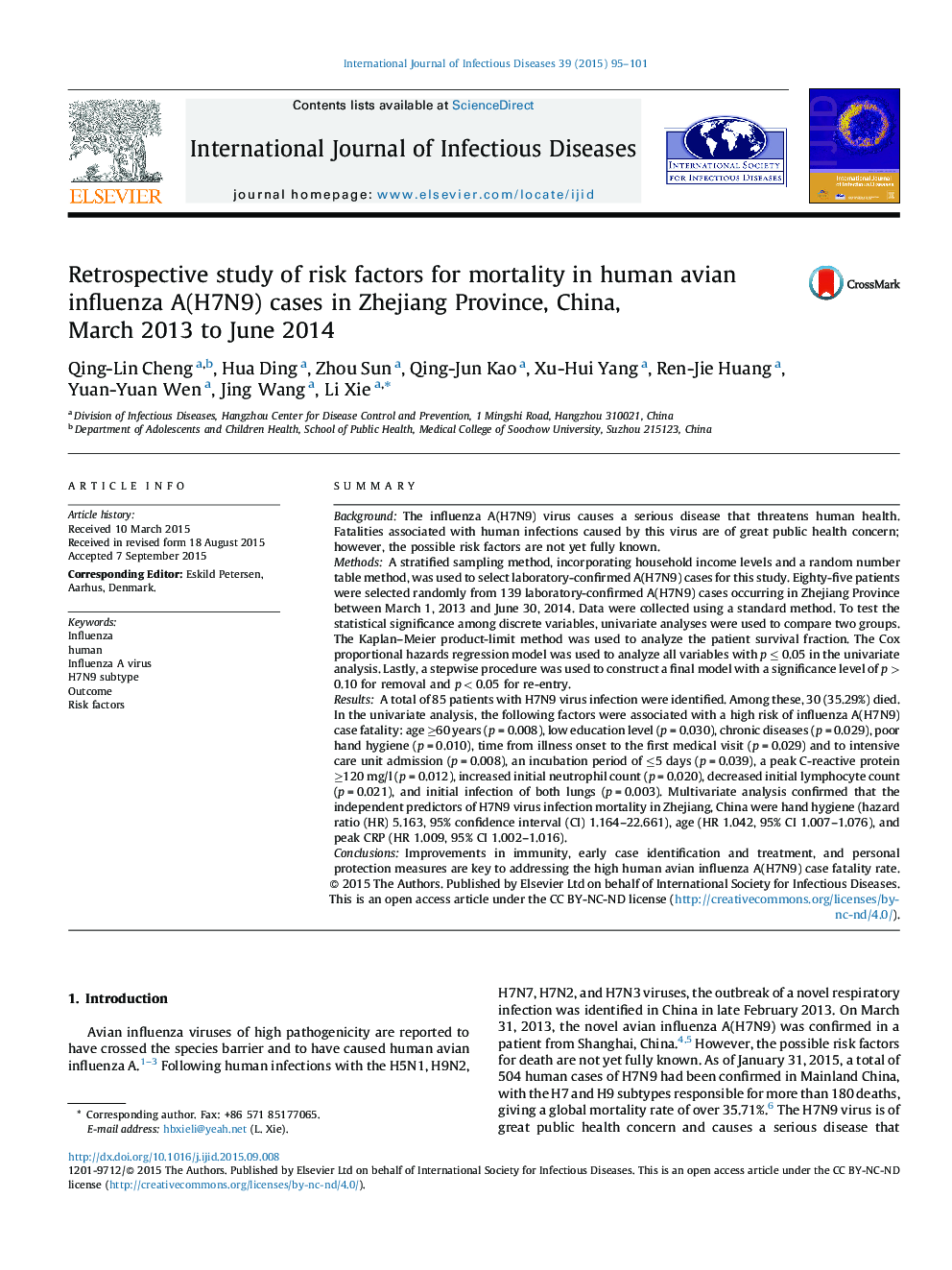| کد مقاله | کد نشریه | سال انتشار | مقاله انگلیسی | نسخه تمام متن |
|---|---|---|---|---|
| 3362029 | 1592056 | 2015 | 7 صفحه PDF | دانلود رایگان |

• The demographic, epidemiological, and clinical features of fatal cases of influenza A(H7N9) virus infection are described.
• We identified risk factors for the case fatality with H7N9 virus infection.
• Based on these risk factors, effective prevention and control measures were developed.
• The reinforcement of self-protection measures, etc. is key to reducing the high case fatality rate.
SummaryBackgroundThe influenza A(H7N9) virus causes a serious disease that threatens human health. Fatalities associated with human infections caused by this virus are of great public health concern; however, the possible risk factors are not yet fully known.MethodsA stratified sampling method, incorporating household income levels and a random number table method, was used to select laboratory-confirmed A(H7N9) cases for this study. Eighty-five patients were selected randomly from 139 laboratory-confirmed A(H7N9) cases occurring in Zhejiang Province between March 1, 2013 and June 30, 2014. Data were collected using a standard method. To test the statistical significance among discrete variables, univariate analyses were used to compare two groups. The Kaplan–Meier product-limit method was used to analyze the patient survival fraction. The Cox proportional hazards regression model was used to analyze all variables with p ≤ 0.05 in the univariate analysis. Lastly, a stepwise procedure was used to construct a final model with a significance level of p > 0.10 for removal and p < 0.05 for re-entry.ResultsA total of 85 patients with H7N9 virus infection were identified. Among these, 30 (35.29%) died. In the univariate analysis, the following factors were associated with a high risk of influenza A(H7N9) case fatality: age ≥60 years (p = 0.008), low education level (p = 0.030), chronic diseases (p = 0.029), poor hand hygiene (p = 0.010), time from illness onset to the first medical visit (p = 0.029) and to intensive care unit admission (p = 0.008), an incubation period of ≤5 days (p = 0.039), a peak C-reactive protein ≥120 mg/l (p = 0.012), increased initial neutrophil count (p = 0.020), decreased initial lymphocyte count (p = 0.021), and initial infection of both lungs (p = 0.003). Multivariate analysis confirmed that the independent predictors of H7N9 virus infection mortality in Zhejiang, China were hand hygiene (hazard ratio (HR) 5.163, 95% confidence interval (CI) 1.164–22.661), age (HR 1.042, 95% CI 1.007–1.076), and peak CRP (HR 1.009, 95% CI 1.002–1.016).ConclusionsImprovements in immunity, early case identification and treatment, and personal protection measures are key to addressing the high human avian influenza A(H7N9) case fatality rate.
Journal: International Journal of Infectious Diseases - Volume 39, October 2015, Pages 95–101